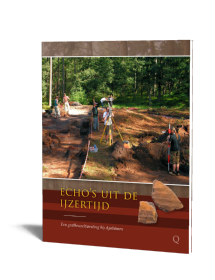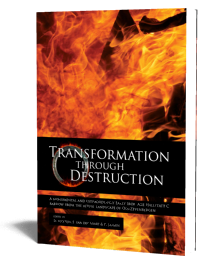Abstract:
Groups of burial mounds may be among the most tangible and visible remains of Europe’s prehistoric past. Yet, not much is known on how “barrow landscapes” came into being . This book deals with that topic, by presenting the results of archaeological research carried out on a group of just two barrows that crown a small hilltop near the Echoput (“echo-well”) in Apeldoorn, the Netherlands.
In 2007, archaeologists of the Ancestral Mounds project of Leiden University carried out an excavation of parts of these mounds and their immediate environment. They discovered that these mounds are rare examples of monumental barrows from the later part of the Iron Age. They were probably built at the same time, and their similarities are so conspicuous that one might speak of “twin barrows”.
The research team was able to reconstruct the long-term history of this hilltop. We can follow how the hilltop that is now deep in the forests of the natural reserve of the Kroondomein Het Loo, once was an open place in the landscape. With pragmatism not unlike our own, we see how our prehistoric predecessors carefully managed and maintained the open area for a long time, before it was transformed into a funerary site. The excavation yielded many details on how people built the barrows by cutting and arranging heather sods, and how the mounds were used for burial rituals in the Iron Age.
This publication is part of the Ancestral Mounds Research Project of the University of Leiden: overview of the other Ancestral Mounds-publications


Dr.
Arjan Louwen
Arjan Louwen (1986) studied ‘Prehistory of Northwest Europe’ at Leiden University. Already as a student he developed a keen interest in funerary archaeology and took part in several key-excavations of prehistoric barrows and urnfields. After graduation in 2010, Arjan has worked alternatingly in commercial archaeology (Archol bv. Leiden) and for Leiden University as a field archaeologist. Since 2012 he has worked full-time at Leiden University, first as a teacher and field director, later as PhD-student. His PhD-research revolved around the funerary practices associated with the urnfields in the Lower-Rhine-Basin. Arjan is currently still working at Leiden University as a teacher and trains students in their first field skills.
read more


Dr.
Quentin Bourgeois
Quentin performed his PhD study within the research project Ancestral Mounds.In his research he dealt with groups of barrows and their position within the landscape. Through extensive GIS-analyses he attempted to shed some light on the choice of location for the placement of the burial monuments. Why were they placed there, what could be seen from that location, and how did this develop through time?
read more


Prof. dr.
David Fontijn
David Fontijn (1971-2023) was professor in the Archaeology of Early Europe at the Faculty of Archaeology, University of Leiden, the Netherlands. His research dealt with the early agrarian societies of Europe from prehistory up until the early historical period, with a particular focus on the Bronze and (early) Iron Age, the exchange and deposition of metalwork and the archaeology of so-called ritual landscapes. He led the NWO-VICI project ‘Economies of Destruction’ investigating the puzzling destruction of valuable objects in Bronze Age Europe (2015-).
read more














